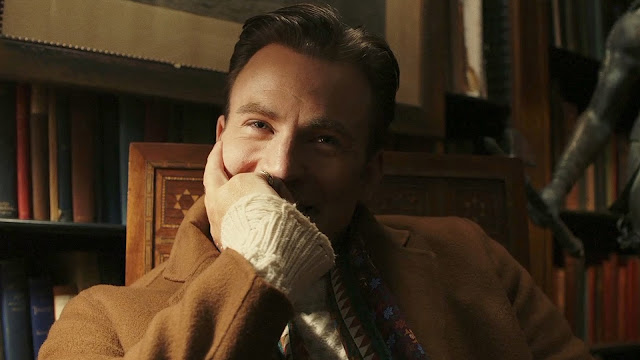Jean-Luc Picard in “Et in Arcadia Ego, Part 2”
SPOILERS AHEAD (You know the drill...)
Finally. The last episode of the first season of “Star Trek: Picard” has aired (is it even proper to say that “streaming-only” shows “aired” when they really don’t?).
The episode was titled “Et in Arcadia Ego, Part 2” and continued where the ninth episode left off.
This 10-episode season had a slow build. There were times when you wished the folks involved could put the narrative in a higher gear.
The season finale was entertaining. I just wished that there had been a “bigger” payoff as it regarded the much foreshadowed showdown between the outlawed synthetic beings on Ghulion IV and the Romulan forces led by the sinister Starfleet officer Commodore Oh (played by Tamlyn Tomita… who also played Ralph Macchio’s love interest in the 1986 movie “The Karate Kid Part II”).
I mean, it was cool when Captain William Riker (Jonathan Frakes) led a fleet of Federation ships to do battle with the Romulans. The issue is that there really wasn’t much of a battle.
In that regard, the climactic point in the story felt sort of anti-climactic. It felt like the Romulan zealots threw in the towel too easily.
The entire narrative this season was basically building to a point where Jean-Luc Picard (Patrick Stewart) dies, and his “soul” (via mind transfer) is put into an android golem. What we have is a reconstituted Picard who has the subtlety and nuance that android sisters Dahj and Soji Asha (Isa Briones) exhibited throughout the season.
This potentially opens up some intriguing possibilities moving forward. Moreover, Picard can act as a surrogate parent for Soji as both learn about who they are and find their place in the universe.
The question is whether future seasons are going to be focused on the conflict between organic and synthetic lifeforms (assuming their is still a conflict). Honestly, I don’t know how many times you want to try and tap that well.
While I know Data was a popular character in “Star Trek: The Next Generation,” he wasn’t my favorite. He was good in a supporting role, but I never felt the character could have (or should have) carried a “Star Trek” series on own.
The first season of “Star Trek: Picard” felt like an elongated movie when you consider the narrative underpinnings of the show. While I enjoyed the serialized nature of the season, I also think the storyline could have been stronger.
There’s been considerable debate online regarding this season. My opinion is largely mixed. I liked seeing Jean-Luc Picard back in action. In the past, part of that character’s appeal was buoyed by “Star Trek: The Next Generation’s” talented supporting cast.
I found the supporting players in “Star Trek: Picard” to be somewhat lacking this season (the exception being Isa Briones’s Soji Asha). Ultimately, I think that fact hurt Jean-Luc Picard in this current incarnation of the franchise.
As I wind down this review, my mind contrasts the “Picard" season finale with that of “The Mandalorian” (another streaming series I reviewed episode-by-episode).
“The Mandalorian’s” finale left me wanting more, looking forward to delving into additional adventures with the cast of characters and mythology established. I thoroughly enjoyed doing individual blog posts for each episode of that series.
Overall, I’m torn as it regards “Star Trek: Picard.”
Had I not made a commitment to review it on the blog each week, I’m not sure I would have stuck with it. There were some episodes that were pretty underwhelming.
That said, I’m glad I had the motivation to see it through. There were some nice moments along the way (in particular, I enjoyed the episode titled “Nepenthe”).
My hope is that the current crew of “Star Trek” writers (as they create more content for CBS All Access) can find the authentic spark that made “Trek” what it was decades ago.
I’m not talking about style or structure. Rather, I’m talking about the intangible je ne sais quoi that embodies the best the franchise has to offer.
Jon Favreau tapped into the “Star Wars”-equivalent of that in “The Mandalorian.”
Let’s hope the “Picard” showrunners can find that spark in the second season — the thing that makes the whole feel greater than the sum of its parts.
Data suggests in the closing moments of the finale, “a butterfly that lives forever is really not a butterfly at all.”
A “Star Trek” series that feels forced and manufactured isn’t as compelling as something more genuine and organic.
As I said earlier, there were some nice moments throughout the season, and I think there are possibilities for some nice adventures down the road.
Read all my episode reviews of “Star Trek: Picard” Season 1:
Previous post: Review: “Star Trek: Picard” Season 1, Episode 9















































